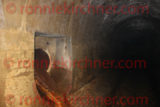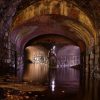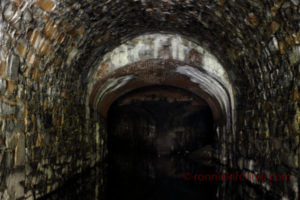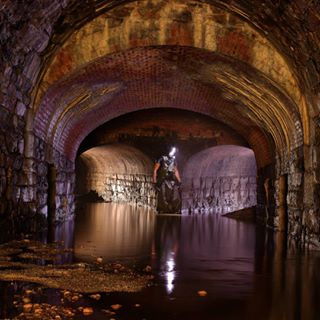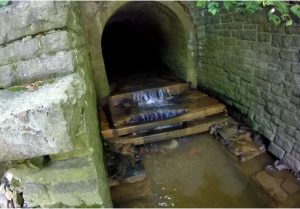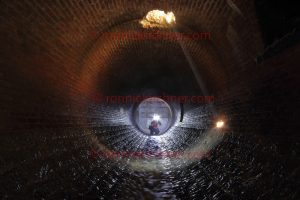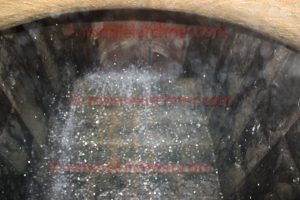
Behold the infamous “SSO #72”, the systems most loathesome of all of Baltimore Sewer Systems purge points. It’s the sewers and residents of Baltimore city’s North East corridor, second chance and hope, during times of heavy precipitation.
It was cutting edge at its time and for the time being still serves its purpose well. It sits approximately 200 meters deep inside of the Jenkins Run Drain. Left hand side, not long after the first accessible manhole portal that sits on the right. The flap valve resembles the other observed CSO/SSO discharge points in system, that have this sort of flap valve. Exactly as you see it. The brilliant and strategic design choosing the Jenkins Runs drain to bleed itself. Ultimately, the perfect interceptor to do this job. Already built to accommodate a high volume of discharge, figuratively speaking, Jenkins Run really is like the I-83 of sanitary sewerage, quick release, straight shot into the Underground Jones Falls River.
Oh the news, the press that CSO/SSO #72 receives. Its practically famous. However, after a visual inspection of Outfall No. 72 at 428 East Preston Street, one cannot place blame on it for all the building problems they are having over there. There are reports of cracks showing up on the walls of buildings, lamp post settling straight down into the ground. Well its not Outfall / SSO / CSO #72 thats causing this. Its the settleing of the earth that was never there in the first. That is when the Jones Falls River was engineered to make a sharp bend south and that whole area was back filled with dirt. At any rate, focusing on another gripe of Outfall #72 and that is the discharge of sanitary sewage into the river. Its well known that accumulations of sewage into entities of water does not phase well for life but sometimes rising to the top means taking risks. And that’s exactly what happened through 1904-1912. The city laid the most advanced sewage system of its day. The inherit risk being, the lack of funding and budget to undertake the same sort of advanced momentum that the city once had but during the 20th century.
- CSO/SSO with the highest volume (>4,000,000 gallons) of underground discharges (ref 1.)
- CSO/SSO with the highest duration (>600 minutes) of underground discharges (ref 1).
If she opens when your downstream coming up, your in a heap of trouble. If she releases and while your still north of her coming back out, your finding another way out or going to be holed up a while.
Judging by the size of the iron pipe, it most likely discharges at pressure. Slamming against the tunnels wall that sits 12 feet away. The outer iron pipe is approximately 30cm (12 inches) and while peering inside a smaller iron pipe is met approximately 15cm (6 inches) in diameter.
Image is copywrited. Full resolution image available by request and/or persmissions.
Reference:
1) https://publicworks.baltimorecity.gov/cso-sso-notifications
